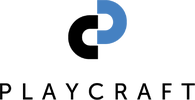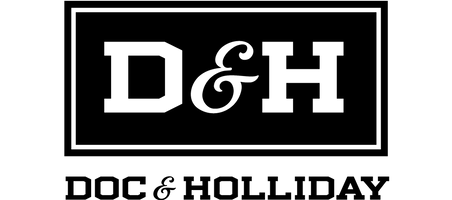Billiard Table Dealers
- Pool Tables: Are they the dealer’s primary business, or just a sideline? Who will install the table? What guarantees are included?
- Reliability and Service: A.E. Schmidt does not pretend to have the largest dealer network, but we do have the best group of billiard dealers in the country, all of which are completely committed to your satisfaction.
- A.E. Schmidt: The majority of Schmidt dealers have at least 20 years experience, or have gone through our extensive factory training course. Remember – the best pool table you can buy, installed improperly, ruins the value of your investment. For Schmidt dealers, billiards is not a sideline – it is their livelihood. Shop with confidence knowing they will do everything in their power to please you.
Checklist
When evaluating a pool table, use the twelve points below as a professional’s guide to quality.
- BUMP THE TABLE. When you impact the end, does the table shake? Is there too much give?
- RUN YOUR HANDS along the legs and cabinet. Is it smooth?
- CHECK THE SLATE. Is it 1-inch thick, in a 3-piece configuration?
- EXAMINE THE FRAME. Is the frame pre-assembled at the factory and numbered?
- CHECK THE CLOTH. Is the cloth stapled on to wood slate frames?
- FEEL THE RAILS. Are there exposed screws anywhere visible on the pool table?
- CHECK THE BLIND PANELS. Are they securely mounted? Smoothly finished?
- ASK ABOUT MATERIALS. Is there any particle board in the table?
- EXAMINE THE SIGHTS. Are they real mother-of-pearl? Is the finished rail silky and uniform?
- ROLL A BALL. Does the table have a quiet lively bounce?
- ASK ABOUT INSTALLATION. Does the dealer contract out his setups?
- ASK ABOUT ORIGIN. Is the table produced in the United States? Did Brand X match up well against our table? If not, buy the table that gives you: • Heavier, stronger frames • More accurate playability • Faster rails • Timeless style • Better finish • Longer warranties • Easier installation • Knock down construction
Table Finish
Table X:Some use what is known as a synthetic finish. This process involves spraying a light color base coat of paint over the surface, then color and grain textures are sprayed back in. This usually looks nice in the showroom, but – when scratched or nicked – shows through to bare wood and cannot be touched up. To get a true test of the quality of finish on a table, we recommend running your hand over the legs and cabinet. You will probably find them rougher than the rail top, because most shoppers touch-test only the top rail.
- Beauty, Value and Appreciation. There are a variety of finishes, many of which are more than acceptable. But for most people, a pool table is more than fun – it is a substantial piece of furniture. As with furniture, the finish is what helps define the mark of quality – quality you can see, feel and enjoy every day.
A.E. Schmidt: We use a simple process from our lowest priced table to our most expensive. First, we sand all pieces to 400 grit consistency, and then we stain all parts with a penetrating oil stain. Next, we spray two coats of lacquer sealer and two coats of acrylic lacquer. Between each coat, we rub the finish with 400 grit paper, which leaves all parts feeling silky and smooth.
The Rubbers Installation / Bumpers
Table X:It can be summed up in two words: contact adhesive. All pro table manufacturers use this in cushion installation. This adhesive has one good property – it dries instantly. The down side is that by drying instantly, all waves and imperfections are locked in permanently. There is no way to adjust the cushions ever. Contact cement also breaks down over time, causing rubber to come loose.
- Bounce. Since all manufacturers essentially buy cushions from the same source, the difference between a fast accurate cushion and a slow one is determined by the way the cushion is installed. Ever play on a table with a loose cushion that caused a strange bounce? We eliminated this problem.
A.E. Schmidt: We use a special high power resin glue which takes three hours to set up and 24-hours to cure, allowing us time to make sure your cushions are dead accurate. Plus, the cushions will not break loose from the rail no matter what kind of abuse it has had. In fact, we guarantee that it won’t happen within a ten-year period – and we are the only ones to make you this promise!
Billiard Table Railings
Table X: All rails need to be fastened to the slate in some fashion. Some use T-Nuts or Tie-Plates, both of which can break if tightened too much. Worse yet, some companies attach rails with lag screws which strip out very easily.
- Good play. The rail becomes the mounting for your rubber cushions which determine how the table will play. Only a tight warp-free rail delivers maximum playability. That’s why all of our rails are cross-laminated to resist warping and twisting.
A.E. Schmidt: We use a 3/8″ threaded insert which we feel gives you far better resistance to over-tightening. This item is imported from Germany and costs four times that used by other manufacturers. As an added bonus, all rails are lined with hardwood on the bottom to add maximum strength and resist warping far better than conventional rails!
Pool Table Cabinets
Table X: Most cabinets are shot together with T-nails and drywall screws. Many times the cabinet is no more than ¾” particle board with wood grain vinyl paper attached. These frames cannot be taken apart, so many times they cannot pass through tight areas on installation. The other kind of construction is commonly known as Tinker Toy. Parts are made at a factory, then assembled for the first time in your home. Often, this creates fitting problems that will always adversely affect the level of your pool table, inconveniently proving that “parts is parts!”
- Assembly and durability. The cabinet of a table needs to work equally as hard as the legs. It must be flat in order to give the slate a true surface on which to rest.
A.E. Schmidt: All frames are assembled at our factory, milled flat, then stamped on each part with the table number. Our number system is then used to put each part back in the location from which it originated.
- *A.E. SCHMIDT USES NO PARTICLE BOARD, PERIOD. All our frame members are made from 6/4″ thick solid wood or 1 ¼” thick plywood with a book matched veneer face. You can feel the difference in bulk by grasping the bottom edge with your hand. Schmidt tables have 66% more supportive material here. Solid frames are assembled with ¾” wood dowel pins. Standard veneer frames use 5/16″ steel pins.
Table Slate
Table X: Many manufacturers use 3/4″, 7/8″ or as little as 5/8″. Some are 1″ thick one-piece configurations, which are both dangerous to move and highly breakable. In an attempt to lower price, some companies today have eliminated the slate frame altogether or switched to particle board. Since the slate frame is the border over which the cloth is stretched, a poor frame can result in an uneven playing surface.
- Security, convenience and playing consistency. Slate is the heart of a pool table, and all other parts revolve around it. Quality slate is by far the best solution for optimum flatness, stability and wear.
A.E. Schmidt: We use only the finest pure Brazilian slate and always with these two specifications: inch-thick, in a three-piece configuration. The slate is also diamond honed on both sides for maximum flatness. Moreover, we use either solid wood or, in some cases, lumber core slate frames. Both have been proven over time and will last for many years.
Blind Panels / Aprons
Table X: Most use an exposed wood screen to fasten the rail and blind, or T-nails covered up with wood filler. The T-nail juncture leaves a fairly visible blemish and becomes annoying over time. Either alternative results in blinds that become wobbly with wear and which may fall off.
- Beauty and strength. This item hangs down from the rail of the pool table. Mostly ornamental, its main function is to cover the slate from the side view. However, the blind panels take a lot of abuse from players bumping and leaning upon them, so must be securely mounted.
A.E. Schmidt: We use what is known as a biscuit joint. There are three biscuits that lock opposing slots in the rail and blind together. The blind and rail are glued together with Titebond and clamped to meld two parts into one unit that will never come loose.
Table Sights
Table X: Some use push-in buttons, which look – and are – cheap. They are raised above the rail and can be easily pulled out. Others use plastic imitation mother of pearl. If you look straight into the sight, they have a clear look…you can actually see through them to the drill bit mark underneath the sight. Furthermore, they are put in after the rail is finished, because plastic will gum up sanders. That’s why you’ll feel a variance when you run your hand over the rail.
- Accurate Sighting and Good Looks. Sights are the little dots on top of the rail that should, if set properly, provide a guide on how to make bank shots. They should also be an attractive inlay to enhance the table’s overall design. After all, people spend the most time visually focused on the top rail.
A.E. Schmidt: When you run your hand over a Schmidt rail, it will feel smooth all the way across. Why? Because we use only real mother-of-pearl imported from Germany, and we sand it before the rail is finished.
Billiard Table Legs
Table X: Most manufacturers cut the corners of box legs at a 45° angle and then staple them forming what is called a “butt joint.” It has no strength and can collapse in time. Woodworkers consider it the most inferior technique.
- Strength and sturdiness. The legs of a pool table take tremendous stress. A. E. Schmidt goes to uncommon lengths to build legs that will not weaken, split or rot from moisture.
A.E. Schmidt: For all box legs, we use a 45 lock mitre with teeth that interlock to form a stable corner. The box leg is then glued and assembled in clamps under pressure to withstand moisture and side-to-side motion. Turned and carved legs are allowed to sit for months in our humidity-controlled setting to cure, then dipped in a special preservative to further assure stability.














